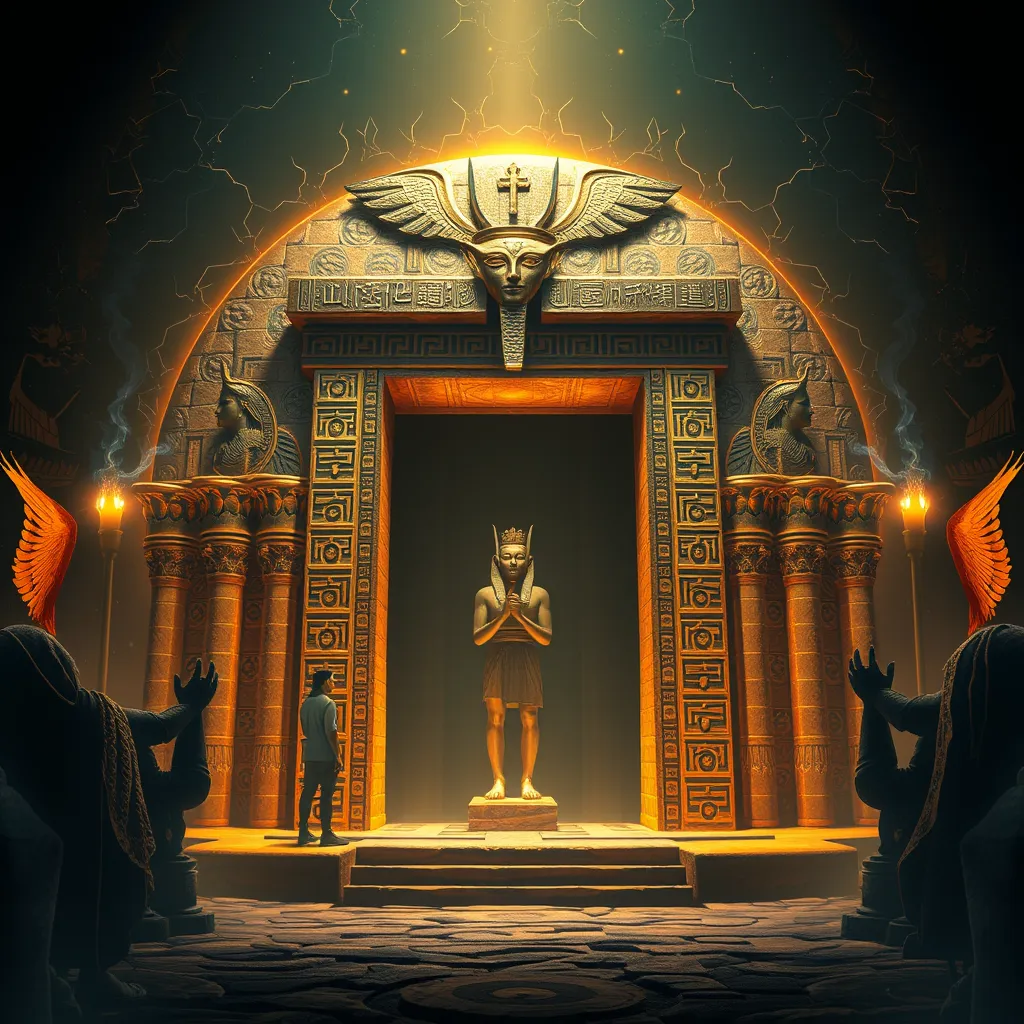The Duat: Unveiling the Secrets of the Afterlife
I. Introduction to the Duat
The Duat, often referred to as the Egyptian underworld, is a profound and complex concept in ancient Egyptian mythology. It represents the realm of the dead and is considered a critical aspect of the beliefs surrounding the afterlife in ancient Egypt. The Duat is not merely a destination but a multifaceted journey that every soul must navigate after death.
In ancient Egyptian belief, the afterlife was a continuation of life on earth, where the deceased would face judgment and embark on a journey filled with trials and tribulations. This belief system reflects the Egyptians’ deep reverence for life and the hope for immortality, shaping their cultural practices, religious rituals, and societal norms.
II. The Mythological Landscape of the Duat
The Duat is depicted as a vast and layered realm, comprising various regions and environments that reflect both the beauty and terror of the afterlife. The landscape of the Duat includes:
- Dark caverns
- Fiery lakes
- Fields of reeds
- Heavenly gardens
These diverse areas symbolize the challenges and rewards that await the souls of the deceased. Within the Duat, several key deities play significant roles, including:
- Osiris: The god of the afterlife and resurrection, ruling over the Duat.
- Isis: The goddess of magic and healing, often depicted aiding souls.
- Thoth: The god of wisdom and writing, who records the deeds of the deceased.
- Anubis: The god of mummification and the protector of graves.
III. The Journey Through the Duat
Upon death, the soul embarks on a perilous journey through the Duat. This journey is marked by a series of challenges, including:
- Crossing the waters of chaos, often represented by the serpent Apophis.
- Facing the judgment of Osiris, where one’s heart is weighed against the feather of Ma’at.
- Navigating through various gates guarded by deities and monsters.
Each of these obstacles tests the moral integrity and virtue of the deceased. Success in this journey allows the soul to attain a peaceful afterlife, while failure results in annihilation or eternal torment.
IV. The Role of the Book of the Dead
The Book of the Dead, an essential text in ancient Egyptian funerary practices, serves as a guide for the deceased navigating the Duat. This collection of spells, prayers, and incantations was designed to assist souls in overcoming the challenges of the afterlife. Key spells include:
- Spell 125: The Weighing of the Heart, providing instructions for the judgment process.
- Spell 30B: A spell for entering the afterlife and overcoming obstacles.
- Spell 17: A powerful incantation for ensuring safe passage through the Duat.
The significance of these spells lies in their ability to empower the deceased, offering them protection and guidance during their journey.
V. Symbolism and Imagery in the Duat
The Duat is rich with symbolism, often depicted in tombs and temples through intricate art and architecture. Common symbols include:
- The Ankh: Symbolizing life and immortality.
- The Feather of Ma’at: Representing truth and justice.
- Lotus Flowers: Signifying rebirth and creation.
Artworks depicting the Duat often serve not only as decoration but as a means to convey the beliefs and values of ancient Egyptians, providing a visual representation of their understanding of life and death.
VI. The Duat in Ancient Egyptian Society
The beliefs surrounding the Duat profoundly influenced ancient Egyptian burial practices. Funerary customs were designed to ensure the safe passage of the deceased, such as:
- Elaborate tomb constructions, including pyramids and mastabas.
- Provision of grave goods, ranging from food to personal items.
- Mummification, preserving the body for the afterlife.
The social implications of these beliefs were significant, as the assurance of an afterlife affected all strata of society. The rich invested heavily in elaborate burial practices, while the poor often faced challenges in securing a favorable afterlife.
VII. Modern Interpretations and Discoveries
Archaeological findings from ancient Egyptian sites have shed light on the Duat and its beliefs. Discoveries include:
- Tombs adorned with Book of the Dead spells, illuminating the practices of ancient funerary rites.
- Artifacts that provide insights into the daily life and spiritual practices of ancient Egyptians.
- Hieroglyphs that depict the journey through the Duat, enhancing our understanding of their mythology.
Modern scholarship continues to evolve, offering fresh interpretations of how the Duat reflects ancient Egyptian values and views on mortality.
VIII. Conclusion: The Legacy of the Duat
In summary, the Duat holds immense significance in both ancient Egyptian culture and modern interpretations of the afterlife. It serves as a testament to the Egyptians’ complex understanding of life, death, and the journey that follows. The enduring influence of Duat beliefs continues to shape contemporary views of the afterlife, inviting reflection on mortality and the human experience.
As we delve deeper into the mysteries of the Duat, we gain not only insights into an ancient civilization but also an appreciation for the universal questions surrounding existence and the afterlife.




